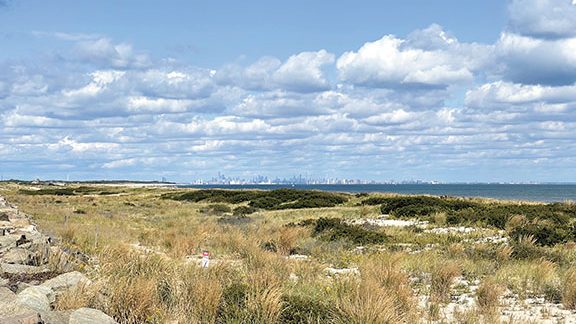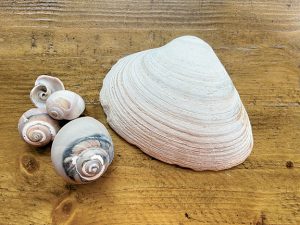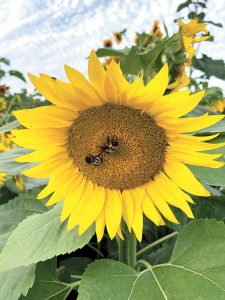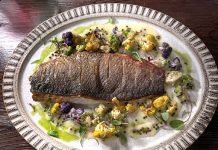
By Jody Sackett, Rumson Environmental Commission
School may not have started yet but you can get your kids back into the swing of learning. Before you ask them to sit in a classroom for hours a day, help them enjoy the last throes of beautiful weather while getting a “natural” education. Just pick any academic subject and create your own outdoor field trip. You’ll ease into them into the school mindset while helping them interactively learning about the environment.
If history is your jam, visit Fort Hancock at the tip of Sandy Hook, part of Gateway National Recreation Area, and discover the centuries-old military base that defended New York City from the War of 1812 through World War II. Read up on the history of fort and then go explore the batteries and missile silos still standing.
After you finish exploring those structures, head to the beach to look for shells and learn about the native Lenapes who lived in this area centuries ago. They were masters of sustainability and stewardship and seashells were a coveted tool. Search for hard Quahog clams, also known as cherrystones; the curved shell can scoop soup, the ridged edge cuts wood, and broken shells make sharp spear points.
If you have a budding scientist, monarch butterflies will be multiplying now as they lay eggs on milkweed, a common native New Jersey plant with wispy seeds found along roadsides and in meadows. Search the undersides of milkweed’s thick leaves to find baby caterpillars or even tiny eggs the size of mustard seeds. There’s usually just one egg per leaf; some knowledgeable folks collect the eggs and carefully hatch them at home to help monarchs thrive. As milkweed pods ripen and release dozens of seeds, hopefully these native plants will also multiply to provide essential food and habitat for endangered monarchs.

The native Lenape who lived in this area used seashells as tools. A trip to the beach can yield many examples of this and other shells that budding scientists will notice are examples of fractals. Elizabeth Wulfhorst
You and your kids can also practice being scientists by volunteering with Clean Ocean Action for the environmental organization’s Community Science program, which strives to improve water quality in Two River-area rivers and other waterways around the state. As a Citizen Scientist collecting local water samples, you’ll work under the direction of professional scientists to keep oceans, rivers and bays clean. Sign up at cleanoceanaction.org to help.
Math may not be everyone’s favorite subject, but maybe you can spark some interest by showing your student all the ways math is present in nature – look for fallen or cut trees to check out the concentric circles which show its age or inspect a spider web early in the morning; both of these are examples of fractals, as are the hexagons in beehives. A fractal is a never-ending pattern that repeats itself at different scales – ferns, tree branches, shells and even coastlines are also examples of fractals. The Fractal Foundation (fractalfoundation.org) even has “fractivities” – fractal activities – for all grade levels to discover fractals in nature.
The Fibonacci sequence or Fibonacci numbers (also a fractal and popularized by Dan Brown in “The Da Vinci Code”) in nature include the spiral in a snail’s shell, the pattern on the outside of a pineapple and even a sunflower’s seeds.
While you are focusing on the numbers inherent in these objects, it’s hard to miss their beauty. Encourage your student’s inner artist by collecting a variety of tree leaves with beautiful colors, shapes and sizes while out walking. Dry and save favorites by pressing them between the pages of a big book, ironing them between sheets of wax paper, or curing them in the microwave between paper towels. You can also Modge Podge small leaves onto smooth flat stones to create environmental rock art.

A sunflower’s seed pattern is just one example of the Fibonacci sequence in nature. Sara Kelly-Wilson
Need to just burn off a little energy? If gym class is where your student’s heart lies, take a brisk hike through a local park – the hilly trails in Hartshorne Woods will help with cardiovascular fitness, then slow down and take a “forest bath” – a kind of ecotherapy which began in Japan in the 1980s that can improve mental health. When walking, search for camouflaged chipmunks, the unfortunately ubiquitous spotted lanternflies (squash them for an extra workout) and, of course, early migrating birds.
The sounds of nature can bring out the musician in anyone. Listen to bird calls and see if you can identify notes on a scale. Does the caw of a blue jay sound like a middle C or a high C? Do the crickets remind you of an instrument? Nature is actually an orchestra if you listen closely.
Finally, explore the outdoors from a language perspective by challenging your child to come up with synonyms for what they see in nature which will help them develop their vocabulary. The leaves aren’t just green; maybe they are emerald or moss or celadon or lime or teal. Tree bark might be rough, bumpy, irregular, coarse or craggy. Find a comfortable patch of grass or a log near water and read “Walden” by Henry David Thoreau about his time spent in a cabin by Walden Pond or another age-level-appropriate book about nature like “Do Bears Poop in the Woods?” or “Over and Under the Pond.”
Whatever you choose to do with the few weeks remaining before life becomes all about schedules, homework and being inside, make sure you take some time to get out into nature and explore.
The article originally appeared in the August 17 – 23, 2023 print edition of The Two River Times.














